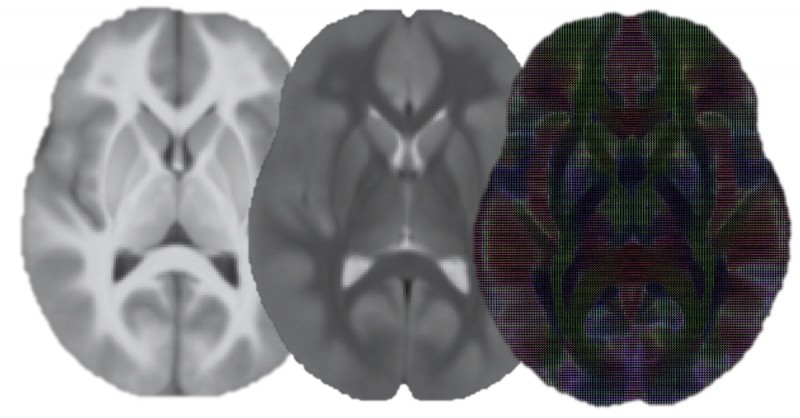New Neuroimaging Analysis Approach Improves Cognition, Behavior Prediction
Images

Neuroscientists based at University of California San Diego School of Medicine have applied an approach to neuroimaging that they believe will reinvigorate the work of many of their fellow brain researchers.
Their work, published in the journal Cerebral Cortex, outlines a method for the use of neuroimaging data to predict elements of cognition and behavioral variables. The technique involves examining widely used magnetic resonance images (MRIs) of brains to find associations to various behaviors, and then applying predictions from those associations to an independent unseen sample.
Carolina Makowski, PhD, a postdoctoral fellow in the Department of Radiology at UC San Diego School of Medicine, explains that researchers commonly use MRIs to examine specific structures of the brain to determine their role in behaviors or abilities including short-term memory, problem-solving ability or a wide range of cognitive functions.
Makowski, the first and corresponding author on the paper, said the group’s work shows a way around a commonly held belief that neuroimaging studies couldn’t yield meaningful results unless the study included thousands of participants.
“It's not always possible to have thousands of individuals,” said Makowski. “There are so many studies and grants that are based on smaller datasets.”
The study team found that the proper use of multivariate methods yielded satisfactory results with studies involving as few as a couple dozen participants. According to Makowski, typical neuroimaging studies operate from univariate analyses, which test a correlation or association between one point in the brain and one behavior. “In that case, yes, you may need thousands of participants in the study.”
She explains that multivariate studies take in a pattern of associations. Additionally, Makowski said the group saw the largest effects of correlation and association by focusing on the task-based functional MRI data. “This was particularly strong for a task that taps into working memory processes,” she said. “Those task-activation patterns were predictive of general cognition, but also of relevant behavior that is actually part of the task.”
Co-author Terry L. Jernigan, PhD, professor of cognitive science, psychiatry and radiology at UC San Diego and the director of the Center for Human Development, added that the team was able to get good results from smaller data sets by “training and tuning” large data sets using multivariate analysis methods. For training, the team used the Adolescent Brain Cognitive Development (ABCD) study database, a compendium of MRIs from some 12,000 nine- and ten-year olds.
“When there are a lot of especially well-structured data that are relevant to complex outcomes that we hope to predict, we can use multivariate methods — which are often referred to as AI by the way — to ‘train’ a large dataset,” Jernigan said. She added that “tuning” of select relationships in a large dataset sharpens the predictive power when applied to smaller studies.
Makowski added that in general, the larger the training sample, the smaller the actual study can be, but even the training sample does not necessarily need to include thousands of individuals if you are working with strong effects to begin with.
“So, in predicting general cognition, if you have 5,000 children in the training sample, you can predict cognition from working-memory related brain activation with just 40 kids in the replication. Even at 100 kids in the training sample, we were still able to predict cognition pretty well with just 60 kids in the replication using these same brain activation patterns,” she said.
Senior and co-corresponding author Anders M. Dale, PhD, professor of neurosciences, psychiatry, and cognitive science and data science at UC San Diego, said the group’s method will help scientists tap the full potential of the ABCD database by enabling them to focus on smaller segments of the mammoth study relevant for different health outcomes.
“There is a reason the ABCD was so large in the first place,” he said. “It was really because you wanted to be able to look at effects in a subset of individuals. We want to look at things like substance use outcomes, psychiatric outcomes, dementia. That’s why it was designed that way.”
Dale added that the predictive power of the small-sample approach can be amplified when it’s supplemented by other types of analyses, such as genetics studies or other types of imaging.
Co-author Tim Brown, PhD, a researcher in the Department of Neurosciences, said the group’s publication is important in that it reopens doors that brain researchers around the world believed had been slammed shut by a 2022 paper that asserted only very large databases could generate valuable results.
“You have a whole bunch of grant holders who don't have thousands of individuals in their studies,” he said. “And they're suddenly being told: ‘You can’t do reproducible work.’ What we’re showing here is that reproducible brain-wide association studies do not require thousands of individuals.”